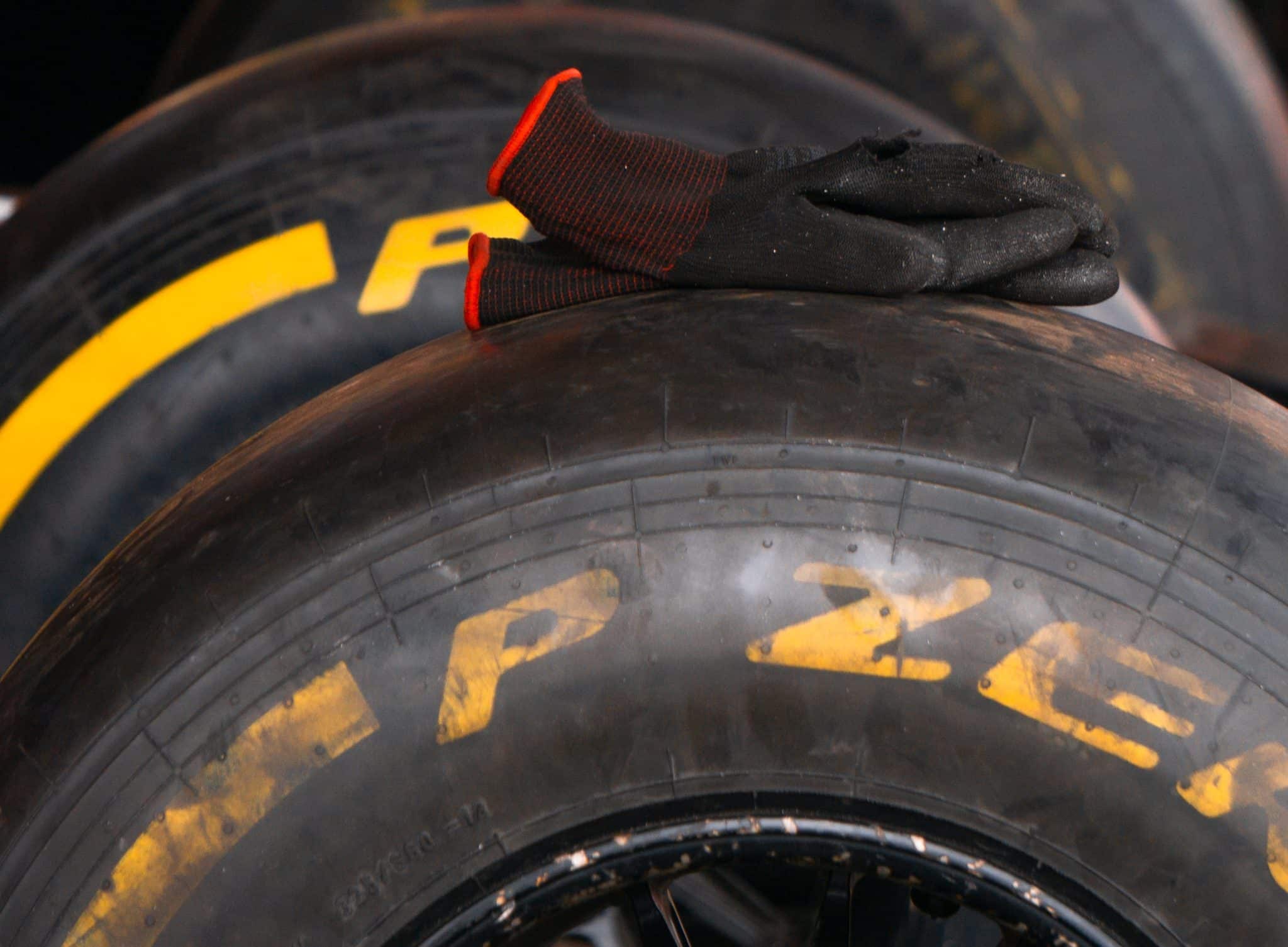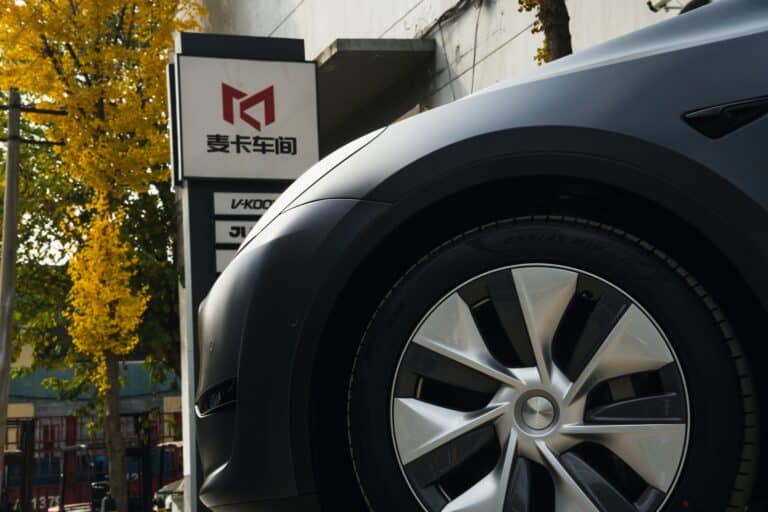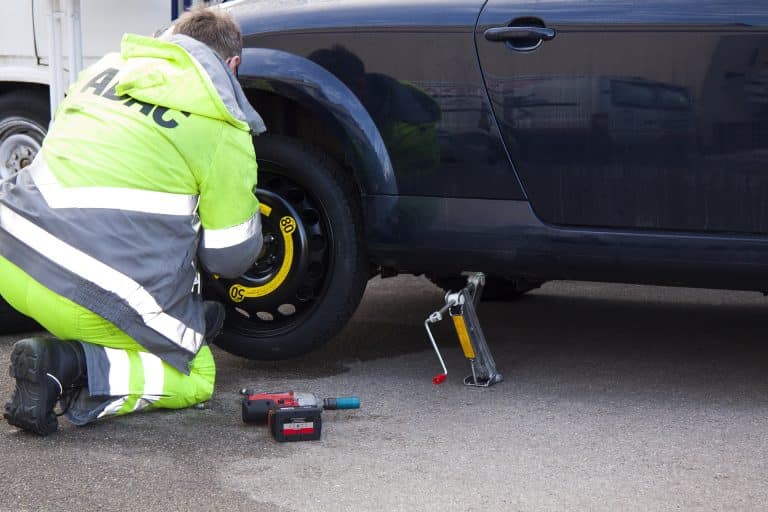Why don’t we use Slicks for daily driving?
Put any enthusiast into a car and the first thing he’ll want to know is how much he can push it before the tires let go. Sure, some tune their cars with baffling numbers, but drive old or poor tires, so we’ll ignore them.
You can get the most out of any car with the right set of tires. Even if we’re talking about an old beat-up car, the rule remains the same. The difference between a touring and a performance-oriented tire can be massive, as long as you’re willing to push the car to the limit.
In this category, we have multiple types of performance tires with distinct features and performance levels. The one thing all of them have in common is the fact that they are road legal. With that said, what about the forbidden apple in this industry?
Slicks are tires that are the best for performance, so many people wonder why don’t we use them for daily driving. Let’s find out.
What are Slick Tires?
Slicks, or often called racing slicks, are tires used for racing, which is pretty self-explanatory. These types of tires don’t have any tread or grooves, meaning that the tire offers a contact area as wide as the tire.
The main reason we call them racing slicks is because that’s their main application. On a track, racing cars need the most grip and traction possible to achieve shorter braking distances or higher cornering speeds.
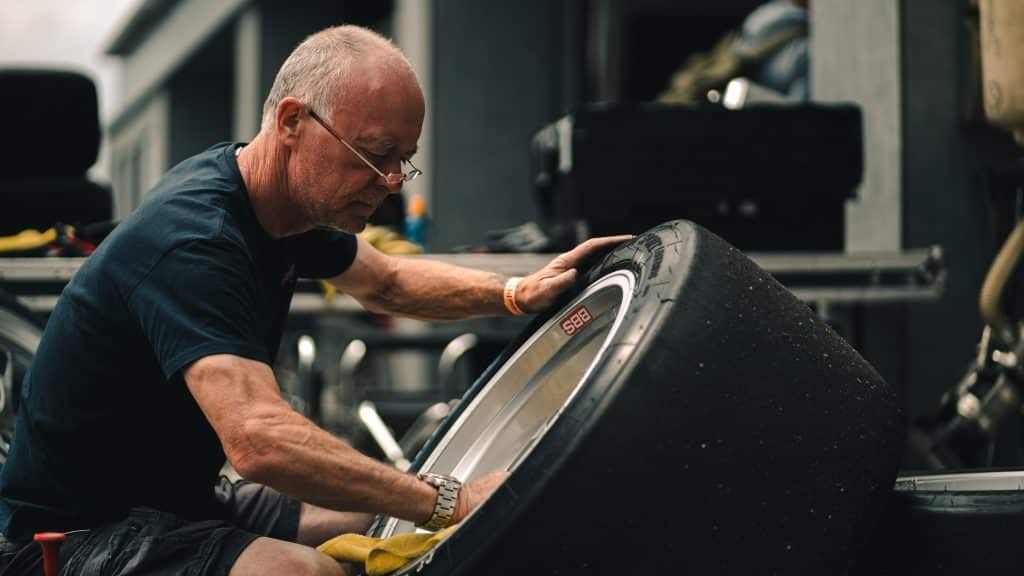
Manufacturers design slick tires with performance in mind, ignoring the rest of the aspects that most of us take for granted in our road tires. Longevity or comfort aren’t crucial in these conditions, so that’s not something that slicks can offer.
If you’ve followed Formula 1, or Ballet 1, as I refer to it in recent years, you may have noticed the use of grooved tires. These aren’t slicks, but are still racing tires, something I’ll touch base on later in this guide.
How are Slick Tires Different from Regular Ones?
Several aspects make slick tires different from the ones we usually get at tire shops. I mentioned all of them already, so let’s dive into each one.
The first and most noticeable is the design. Slick tires are as smooth as a baby’s bottom, meaning that the contact area is as wide as the tire. With road-legal tires, the percentage is smaller. These tires have grooves, so the contact surface is less. We’re talking about 70-80% of the full width of the tire is the part that’s in contact with the surface.
As part of the pattern, there is an additional difference. When we talk about “regular” tires, we often speak about block movement. This happens when you apply any kind of force to the tire when accelerating or cornering. It may be fine for normal driving, but on the limit, you’ll notice it. The movement also introduces additional temperature in the tires. With slicks, you can view the entire tire as a single block, so there isn’t as much movement, thus making it sharper, more precise, and less prone to overheating.
Diving deeper into the matter, we come to the rubber compound. Tire manufacturers are very secretive about the mixture because that holds the secret to the performance. With road-going tires, the compound should offer a little bit of everything – performance, longevity, and comfort. Slick tires aren’t designed for that, so you can forget about driving comfortably for over 70,000 miles on a set.
Even though I’m not a fan of treadwear ratings, I have to mention it here. By definition, it gives you information about how much a tire would last. Softer tires don’t last as long, so naturally, they have lower ratings. Harder tires come with higher ratings, so they are longer lasting. The issue here is that softer tires are gripper, so you’ll be getting better lap times. The best example of this is again in F1.
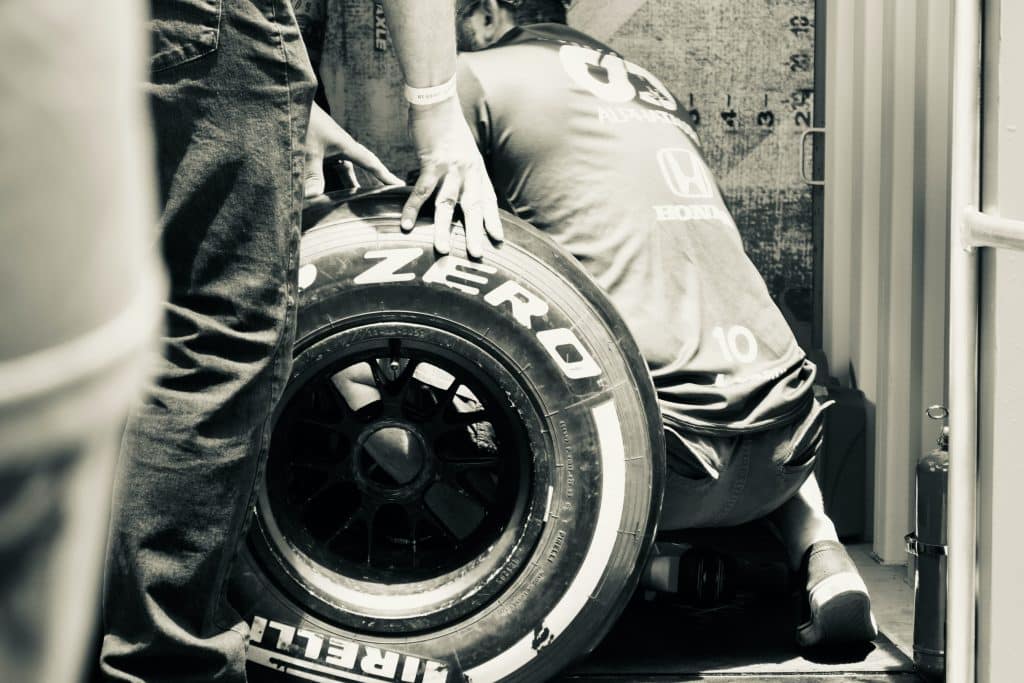
Pirelli chooses which 3 compounds they will use during each race dubbed Hard, Medium, and Soft. Depending on the circuit, we may see differences over 1s between the soft and hard tires. The softer tire is better, but it won’t last as long as the hard one, which is why strategy plays a crucial role, but that’s a different topic. When looking at road-going tires, we have much different treadwear ratings when compared with racing tires. It’s a higher number, meaning that the compound is harder, making the tires longer lasting. As a result, they aren’t as grippy.
We can see this in performance tires on the market, as they get a lower treadwear rating when compared to their touring cousins. In my opinion, this is more of a marketing campaign, as manufacturers can give us numbers based on certain applications. Of course, the first example that comes to mind is the Ventus RS-3, which magically got bumped from a 140 to 200 treadwear rating.
With my beef with the rating aside, the general rule is that the lower the number, the gripper the tire is. Slicks have the smallest treadwear rating out of all tires on the market. They may not last as long, but they will get you around a corner at a much higher speed. Also, to get the best performance out of them, you’d need to run them at a certain temperature. Street-legal tires aren’t as limiting, so you can run them colder and still get a safe performance.
The last difference between slicks and road tires is the internal construction. Whenever we review tires, we talk about the internal construction and associate it with its ability to keep the sidewall stable or absorb bumps. Slicks aren’t designed for comfort, so the internal construction is aimed specifically at keeping the sidewall as rigid as possible. This helps improve the dynamic characteristics of the tire at the expense of comfort. Road tires need to balance things, so the sidewall may be more flexible to make them more tolerable in daily driving scenarios.
I should also mention the slicks’ ability to withstand torture, another advantage of the internal construction. Depending on the racing series in question, racing slicks can survive speeds of over 200 mph. To be fair, modern road-legal tires can handle those speeds as well, but they won’t survive for too long on a track going over curbs around every corner.
Slicks may not have the longest-lasting rubber compound on the market, but they have an internal construction that can handle a heavy beating.
What about Grooved Racing tires?
I mentioned racing tires that have grooves, so let’s talk about those. They aren’t called slicks and we usually see them in Formula 1. The grooves in the pattern are designed for aquaplaning, so these are the tires you’ll see whenever there’s rain. In this sport, there are intermediate tires, which are used in lighter rainy conditions. The full wet options are used in pouring rain, something we rarely see, as most of those races get canceled.
The idea of grooves in racing tires isn’t all that different from the ones we use on our passenger cars. Slicks are terrible in the rain because they cannot evacuate the water, which is where the grooved ones come into play. Teams use these to get better performance and keep the cars faster. Having grooves means that the contact patch is smaller, but considering the conditions, they are still faster in the rain when compared to slicks.
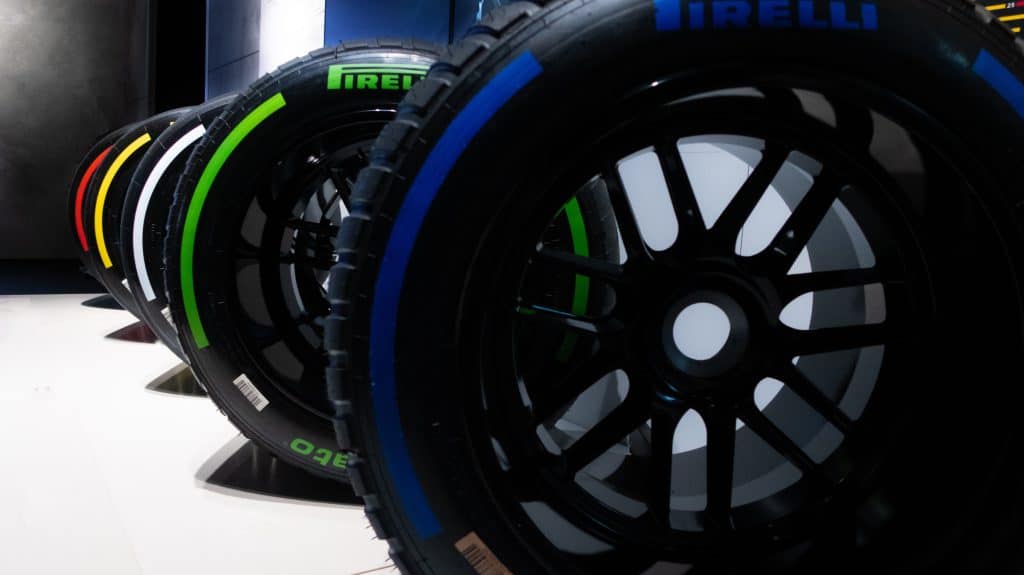
This is where balance comes into play. The drivers and teams are prepared to sacrifice a bit of surface area for a more stable car. If you’ve watched any kind of racing where it started to rain, you have noticed how easily the cars can lose control with slicks.
Why don’t we use Slicks for Daily Driving?
Now it’s time to answer the big question, why don’t we use slicks if they are superior in terms of performance? These kinds of tires have a specific application and it’s not for daily driving. They offer the highest levels of grip and traction and they do that in certain conditions. For the most part, you’ll need a warm summer’s day to get the most out of them.
To be fair, we don’t drive on the limit on public roads, so in theory, they should be fine, as long as the roads are dry and warm. The problem with slicks is in colder temperatures or wet roads. They will do a very poor job in these conditions, to the point where I can say that they are unsafe. It means that you’ll have a lot longer braking distances and not enough grip to go around a corner without understeer or oversteer.
Are there Road-Legal Slick tires?
Even though we still call them slicks, the precise term for road-legal slick tires is semi-slicks. The reason behind this terminology is that they are grooved, meaning that you’ll get safe enough wet performance. Keep in mind that not all semi-slick tires are road legal.
The reality of the situation is that these tires are still good for a track day, but you can use them on the road. You’ll get all the performance you’ll want and more in dry conditions and good enough performance in wet.
While this seems like a good thing, semi-slicks suffer from the same disadvantages as slicks, at least in terms of daily driving them. They won’t last nearly as long as some UHP tires and the refinement will be poor. These tires are mostly used for situations where you want to drive to the track and don’t want to bother towing your car or change wheels and tires when you get there.
Semi-slick tires are road legal, but they aren’t tires that I would recommend. You’ll never drive your car on the road as hard as on a track, so for a bit of fun, there are more sensible performance options.
Conclusion
By definition, slick tires are superior to any kind of other tire for road use. The disclaimer here is that this applies only in certain conditions, which include a toasty tarmac and a hot day. In these situations, there isn’t any other road-legal tire that can offer more. As good as this sounds, slicks aren’t road-legal because they don’t perform safely in all conditions.
Slicks will do a good job in dry conditions but will be unsafe in wet. This is where the road-legal semi-slicks come into play. They are a suitable alternative that you can drive on the road. Even they have some drawbacks, but you won’t get fined for that.
In my opinion, for people looking to have some fun on the road, any decent UHP tire will do an excellent job. You will get less performance when compared with slicks, but you won’t sacrifice longevity and refinement as much. If you go to the track very often, then semi-slicks are a good option because you can drive them on the street and get excellent performance on the track. For maximum grip and traction, slicks are the best choice, as long as you don’t use them on the road.
